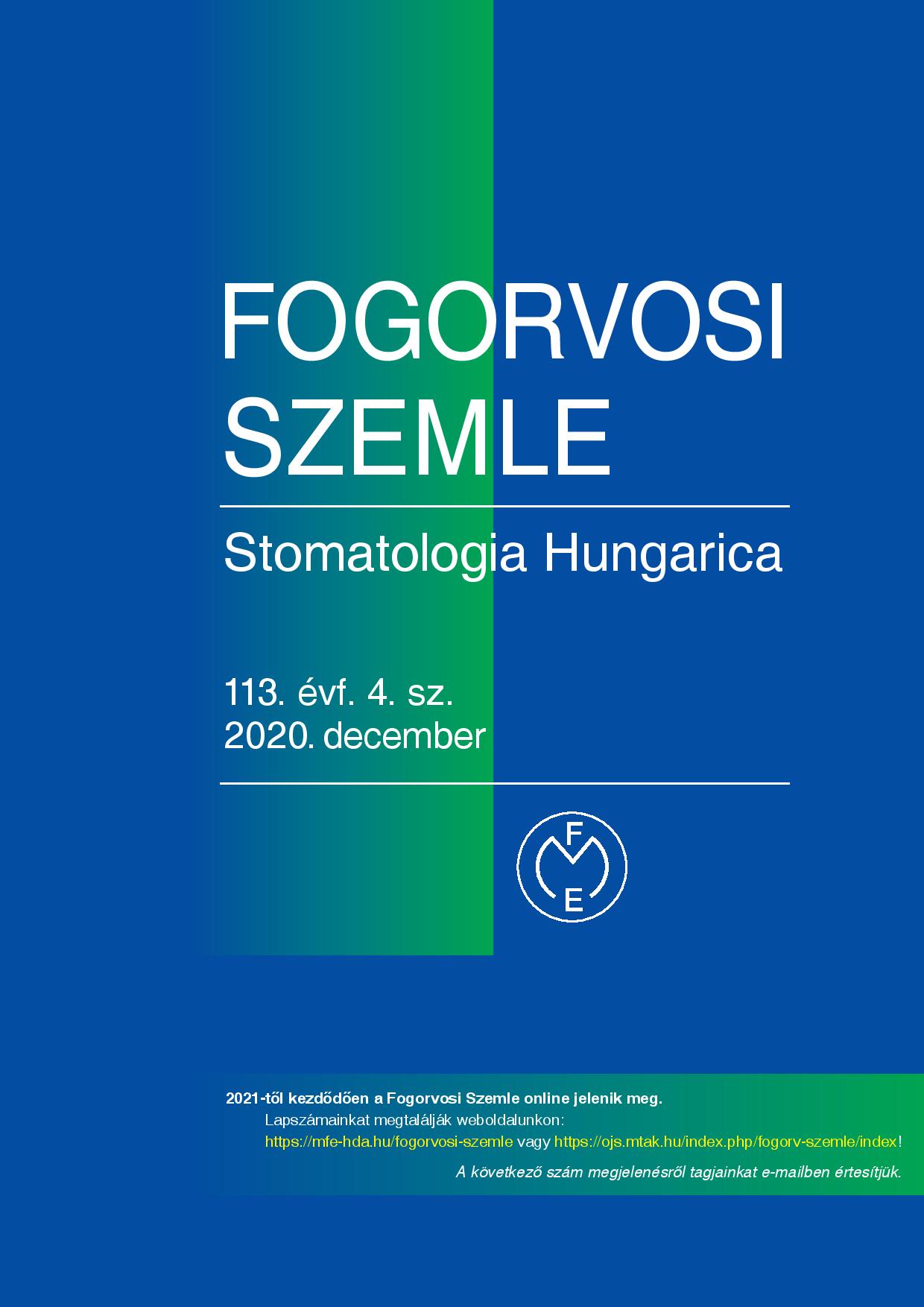Comparing orthodontic bracket bonding methods based on bracket failure rates
Abstract
During modern orthodontic treatment brackets are usually placed directly on the tooth enamel. The bond has to withstand
a variety of forces (occlusial, masticatory, as well as forces from the wire itself) in the moist oral environment. Additionally,
it’s important that the bracket leaves behind an intact enamel surface after removal. The quality of the bracket
bonding depends mostly on the chosen technique. Our study goal was to compare and evaluate the different bonding
methods based on bracket failure rates. PubMed and Google Scholar were used as search engine. We compared recent
publications taking three main factors into consideration: direct or indirect bonding technique, bracket bonding materials
and the type of etching on the enamel surface (conventional acid etching versus self-etching primers). Additionally, data
were collected based on the orders of primary bonded brackets and the order of brackets that needed replacement. over
a 10 month period in the Department of Community Dentistry. We used the direct bonding technique, composite resin as
bonding material and conventional acid etching in order to achieve micromechanical retention. In our observations the
failure rate resulted in 4,1%., which is below the internationally accepted 10% ratio. [6, 24]
In conclusion no significant differences between direct and indirect bonding techniques were found. Both can provide
reliable bonding forces during the whole treatment. Regarding the optimal bonding material, the composite resins are the
most widespread and have the highest bonding strengths. Their failure rates are between 3,5–8,3%. [19] Glass ionomer
cements are no longer commonly used as orthodontic bonding material unlike their improved versions: resin-modified
glass ionomers (RMGIC). Many studies report favorable results about this relatively new type of bonding material. Compomers
are not commonly used as bonding material yet. According to in vitro studies there is no significant difference
in failure rates between conventional acid etching and self-etching primers. [2, 4, 29] In several studies were found that
larger bonding forces can form with conventional acid etching in vivo. Self-etching primers have the advantage of sparing
a lot of chair time for the doctor, causing a positive financial effect too.
Copyright (c) 2021 Authors

This work is licensed under a Creative Commons Attribution 4.0 International License.


.png)




1.png)



